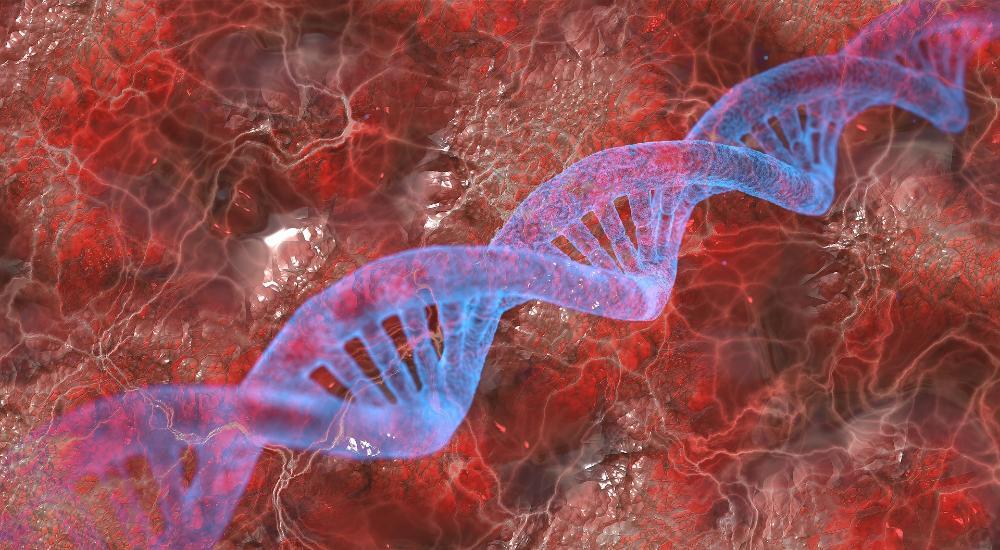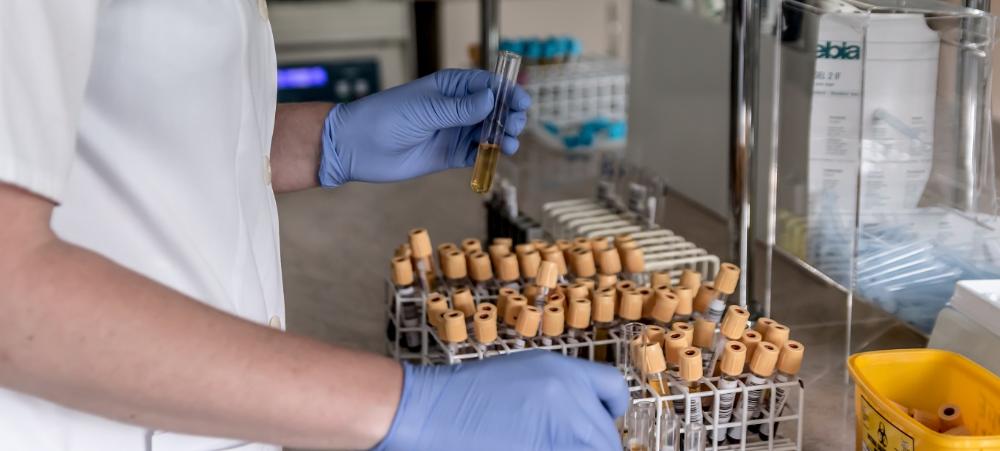Cardiogenomics (Anja Bye Group) – CERG

Bye Group
Cardiogenomics

Anja Bye's research group looks, among other things, at whether heart disease can be predicted by small markers in the blood. The group also studies the importance of genes for fitness and health risks. On this page you can read more about ongoing projects and published results from Anja's research.
Main projects
CorFemina
What's the importance of women being aware of their own risk for heart disease and having good tools to calculate risk?
CardioFit
Which genes determine our risk of lifestyle diseases? Are these the same genes that affect our physical fitness? And is there a causal link between fitness and cardiovascular disease?
revealCVD
Can the levels of small substances in the blood help us find out who is more susceptible to lifestyle diseases in the future?
Biomarkers, atherosclerosis and cardiovascular risk
Are the blood levels of micro-RNAs and subfractions of lipoproteins associated with dangerous plaques in the coronary arteries of heart patients? And can these biomarkers help us reveal who is at high risk of a heart attack?
COPING
How can genetic markers of aerobic capacity and resting heart rate help us better predict who is at high risk for cardiovascular disease?
CardioFit PhD
What other health conditions are linked to our fitness genes? And could overproduction of one fitness gene lead to better heart function?
Exercise, microNRAs and atherosclerosis
Does endurance exercise change the levels of microRNAs in the blood after a heart attack? And how do these changes affect the composition of the plaque in the blood vessels of the heart?
Master's projects
Endurance exercise in lipedema
Does endurance training lead to less pain and a better quality of life for women with lipedema?
Exercise and lipids in overweight adolescents
Which exercise intensity has the greatest effect in terms of the lipid profile in overweight or obese adolescents?
Lipoproteins and coronary plaques
Do the levels of various fatty substances in the blood reveal which heart patients have the most severe formation of plaques in the coronary arteries?

Exercise and lipoprotein profile
What can the levels of 99 different lipoproteins in the blood tell us about the aerobic fitness of healthy adults?
Machine learning and prediction of cardiovascular disease
Can classification methods from statistical learning give us better models to predict who will be affected by cardiovascular disease?
Exercise, genetics and cardiovascular disease
Can exercise affect our genetic risk of cardiovascular disease?
PhD students
-
Virginia de Martin Topranin PhD Candidate
virginia.de.m.topranin@ntnu.no Department of Circulation and Medical Imaging -
Marie Klevjer PhD Candidate
marie.klevjer@ntnu.no Department of Circulation and Medical Imaging -
Ada Nilsen Nordeidet Researcher
ada.n.nordeidet@ntnu.no Department of Circulation and Medical Imaging -
Julie Caroline Sæther PhD
julie.c.sather@ntnu.no Department of Circulation and Medical Imaging
Master's students
Collaborators (selection)
-
Tone Frost Bathen Professor
+47-73551355 +4795021097 tone.f.bathen@ntnu.no Department of Circulation and Medical Imaging -
Trygve Brautaset Professor
+47-73593315 +4798283977 trygve.brautaset@ntnu.no Department of Biotechnology and Food Science -
Ben Michael Brumpton Associate Professor in Genetic Epidemiology
+47-73597564 +4746229495 ben.brumpton@ntnu.no Department of Public Health and Nursing -
Turid Follestad Associate Professor of Medical Statistics
+4798066880 turid.follestad@ntnu.no Department of Public Health and Nursing -
Guro F. Giskeødegård Professor
+47-73598916 +4790550347 guro.giskeodegard@ntnu.no Department of Public Health and Nursing -
Kristian Hveem Professor
+47-74019242 +4747652530 kristian.hveem@ntnu.no Department of Public Health and Nursing -
Erik Madssen Associate Professor
erik.madssen@ntnu.no Department of Circulation and Medical Imaging -
Rune Wiseth
+4772828145 rune.wiseth@ntnu.no Department of Circulation and Medical Imaging
List of scientific publications from Cardiogenomics (Anja Bye Group)
2025:
Joensuu, L., Koivunen, K., Tynkkynen, N. P., Palviainen, T., Kaprio, J., Klevjer, M., Øvretveit, K., Wisløff, U., Bye, A., Ekelund, U., Sillanpää, E., & FinnGen Consortium. (2025). Genetic liability to sedentary behaviour and cardiovascular disease incidence in the FinnGen and HUNT cohorts. British Journal of Sports Medicine.
De Martin Topranin, V., Wiig-Fisketjøn, A., Botten, E., Dalen, H., Langaas, M., & Bye, A. (2025). Sex-specific cardiovascular disease risk prediction using statistical learning and explainable artificial intelligence: the HUNT Study. European Journal of Preventive Cardiology, zwaf135.
2024:
Nordeidet, A. N., Klevjer, M., Øvretveit, K., Madssen, E., Wisløff, U., Brumpton, B. M., & Bye, A. Sex-specific and polygenic effects underlying resting heart rate and associated risk of cardiovascular disease. European Journal of Preventive Cardiology.
2023:
Klevjer, M., Rasheed, H., Romundstad, P. R., Madssen, E., Brumpton, B. M., & Bye, A. (2023). Insight into the relationship between resting heart rate and atrial fibrillation: A Mendelian Randomization study. Europace, 25(10), euad292.
Tynkkynen, N. P., Törmäkangas, T., Palviainen, T., Hyvärinen, M., Klevjer, M., Joensuu, L., Kaprio, J., Bye, Anja & Sillanpää, E. (2023). Associations of polygenic inheritance of physical activity with aerobic fitness, cardiometabolic risk factors and diseases: the HUNT Study. European Journal of Epidemiology, 1-14.
Nordeidet, A. N., Klevjer, M., Wisløff, U., Langaas, M., & Bye, A. (2023) Exploring shared genetics between maximal oxygen uptake and disease: the HUNT study. Physiological Genomics
Sæther, J. C., Vesterbekkmo, E. K., Taraldsen, M. D., Gigante, B., Follestad, T., Røsjø, H. R., Omland, T., Wiseth, R., Madssen, E., & Bye, A. (2023). Associations between circulating microRNAs and lipid-rich coronary plaques measured with near-infrared spectroscopy. Scientific Reports, 13(1), 7580.
Sperstad, S. B., Sæther, J. C., Klevjer, M., Giskeødegård, G. F., Bathen, T. F., Røsbjørgen, R., Dalen, H., & Bye, A. (2023). Lipoprotein subfraction profiling in the search of new risk markers for myocardial infarction: The HUNT study. Plos one, 18(5), e0285355.
Sæther, J. C., Vesterbekkmo, E. K., Gigante, B., Giskeødegård, G. F., Bathen, T. F., Follestad, T., Wiseth, R., Madssen, E., & Bye, A. (2023). The association between circulating lipoprotein subfractions and lipid content in coronary atheromatous plaques assessed by near-infrared spectroscopy. IJC Heart & Vasculature, 46, 101215.
Klevjer, M., Nordeidet, A. N., & Bye, A. (2023). The genetic basis of exercise and cardiorespiratory fitness–Relation to cardiovascular disease. Current Opinion in Physiology, 100649.
2022:
Sæther, J. C., Klevjer, M., Giskeødegård, G. F., Bathen, T. F., Gigante, B., Gjære, S., Myhra, M., Vesterbekkmo, E. K., Wiseth, R., Madssen, E., & Bye, A. (2022). Small LDL subfractions are associated with coronary atherosclerosis despite no differences in conventional lipids. Physiological Genomics.
Benegiamo, G., Bou Sleiman, M., Wohlwend, M., Rodríguez-López, S., Goeminne, L. J., Laurila, P. P., Kleiver, M., Salonen, M. K., Lahti, J., Jha, P., Cogliati, S., Enriquez, J. A., Brumpton, B. M., Bye, A., Eriksson, J. G.,& Auwerx, J. (2022). COX7A2L genetic variants determine cardiorespiratory fitness in mice and human. Nature Metabolism, 1-16.
Klevjer, M., Nordeidet, A. N., Hansen, A. F., Madssen, E., Wisløff, U., Brumpton, B. M., & Bye, A. Genome-wide Association Study Identifies New Genetic Determinants of Cardiorespiratory Fitness: The HUNT Study. Medicine and science in sports and exercise.
Taraldsen, M. D., Wiseth, R., Videm, V., Bye, A., & Madssen, E. (2022). Associations between circulating microRNAs and coronary plaque characteristics: potential impact from physical exercise. Physiological Genomics.
Nodeland, M., Klevjer, M., Sæther, J., Giskeødegård, G., Bathen, T. F., Wisløff, U., & Bye, A. (2022). Atherogenic lipidomics profile in healthy individuals with low cardiorespiratory fitness: The HUNT3 fitness study. Atherosclerosis
2021:
Williams, C. J., Li, Z., Harvey, N., Lea, R. A., Gurd, B. J., Bonafiglia, J. T., Papadimitrou, I., Jacques, M., Croci, I., Stensvold, D., Wisløff, U., Taylor, J. L., Gajanand, T., Cox, E. R., Ramos, J. S., Fassett, R. B., Little, J. P., Francois, M. E., Hearon Jr, C. M., Sarma, S., Janssen, S. L. J. E., van Craenenbroeck, E. M., Beckers, P., Cornelissen, V. A., Howden, E. J., Keating, S. E., Yan, X., Bishop, D. J., Bye, A., Haupt, L. M., Griffiths, L. R., Ashton, K. J., Brown, M. A., Torquati, L., Eynon; N., & Coombes, J. S. (2021). Genome wide association study of response to interval and continuous exercise training: the Predict-HIIT study. Journal of Biomedical Science, 28(1), 1-15.
Rutkovskiy, A., Lyngbakken, M. N., Dahl, M. B., Bye, A., Pedersen, M. H., Wisløff, U., Christensen, G., Høiseth, A. D., Omland, T., & Røsjø, H. (2021). Circulating MicroRNA-210 Concentrations in Patients with Acute Heart Failure: Data from the Akershus Cardiac Examination 2 Study. Clinical Chemistry.
2020:
Halle, K. K., Bakke, Ø., Djurovic, S., Bye, A., Ryeng, E., Wisløff, U., Andreassen, O. A., & Langaas, M. (2020): Computationally efficient familywise error rate control in genome‐wide association studies using score tests for generalized linear models. Scandinavian Journal of Statistics
Bye, A., Klevjer, M., Ryeng, E., Silva, G. J., Moreira, J. B. N., Stensvold, D., & Wisløff, U. (2020). Identification of novel genetic variants associated with cardiorespiratory fitness. Progress in Cardiovascular Diseases.
Gigante, B., Papa, L., Bye, A., Kunderfranco, P., Viviani, C., Roncarati, R., Briguori, C., de Faire, U., Bottai, M., & Condorelli, G. (2020). MicroRNA signatures predict early major coronary events in middle-aged men and women. Cell death & disease, 11(1), 1-3.
2019:
Velle-Forbord, T., Eidlaug, M., Debik, J., Sæther, J. C., Follestad, T., Nauman, J., Gigante, B., Røsjø, H., Omland, T., Langaas, M., & Bye, A. (2019). Circulating microRNAs as predictive biomarkers of myocardial infarction: Evidence from the HUNT study. Atherosclerosis.
Williams, C. J., Gurd, B. J., Bonafiglia, J. T., Voisin, S. A. C., Li, Z., Harvey, N., Croci, I., Taylor, J. L., Gajanand, T., Ramos, J. S., Fassett, R. G., Little, J. P., Francois, M. E., Hearon Jr., C. M., Sarma, S., Janssen, S. L. J. E., Caenenbroeck, E. M. V., Beckers, P., Cornelissen, V. A., Pattyn, N., Howden, E. K., Keating, S. E., Bye, A., Stensvold, D., Wisløff, U., Papadimitriou, I., Yan, X., Bishop, D. J., Eynon, N., & Coombes, J., (2019). A multi-centre comparison of V̇O2peak trainability between interval training and moderate intensity continuous training. Frontiers in Physiology, 10, 19.
2018:
Thomsen, R. S., Nilsen, T. I. L., Haugeberg, G., Bye, A., Kavanaugh, A., & Hoff, M. (2018). Effect of high-intensity interval training on cardiovascular disease risk factors and body composition in psoriatic arthritis: a randomised controlled trial. RMD Open, 4(2), e000729.
Bjørnland, T., Bye, A., Ryeng, E., Wisløff, U., & Langaas, M. (2018). Powerful extreme phenotype sampling designs and score tests for genetic association studies. Statistics in medicine.
2017:
Silva, G. J., Bye, A., el Azzouzi, H., & Wisløff, U. (2017). MicroRNAs as important regulators of exercise adaptation. Progress in cardiovascular diseases, 60(1), 130-151.
2016:
Bye, A., Røsjø, H., Nauman, J., Silva, G. J., Follestad, T., Omland, T., & Wisløff, U. (2016). Circulating microRNAs predict future fatal myocardial infarction in healthy individuals–The HUNT study. Journal of molecular and cellular cardiology, 97, 162-168.
2015:
Sandstad, J., Stensvold, D., Hoff, M., Nes, B. M., Arbo, I., & Bye, A. (2015). The effects of high intensity interval training in women with rheumatic disease: a pilot study. European journal of applied physiology, 115(10), 2081-2089.
Wisløff, U., Bye, A., Stølen, T., Kemi, O. J., Pollott, G. E., Pande, M., McEachin, R. C., Britton, S. L., & Koch, L. G. (2015). Blunted cardiomyocyte remodeling response in exercise-resistant rats. Journal of the American College of Cardiology, 65(13), 1378-1380.
Moreira, J. B., Wohlwend, M., Alves, M. N., Wisløff, U., & Bye, A. (2015). A small molecule activator of AKT does not reduce ischemic injury of the rat heart. Journal of translational medicine, 13(1), 1-10.
2014:
Slagsvold, K. H., Moreira, J. B., Rognmo, Ø., Høydal, M., Bye, A., Wisløff, U., & Wahba, A. (2014). Remote ischemic preconditioning preserves mitochondrial function and activates pro-survival protein kinase Akt in the left ventricle during cardiac surgery: a randomized trial. International journal of cardiology, 177(2), 409-417.
Røsjø, H., Dahl, M. B., Bye, A., Andreassen, J., Jørgensen, M., Wisløff, U., Christensen, G., Edvardsen, T., & Omland, T. (2014). Prognostic value of circulating microRNA-210 levels in patients with moderate to severe aortic stenosis. PLoS One, 9(3), e91812.
2013:
Bye, A., Røsjø, H., Aspenes, S. T., Condorelli, G., Omland, T., & Wisløff, U. (2013). Circulating microRNAs and aerobic fitness–the HUNT-Study. PloS one, 8(2), e57496.
Send us an e-mail:
cerg-post@mh.ntnu.no
Send us regular mail:
NTNU, Fakultet for medisin og helsevitenskap
Institutt for sirkulasjon og bildediagnostikk
Postboks 8905
7491 Trondheim
Visit us:
St. Olavs Hospital
Prinsesse Kristinas gt. 3
Akutten og Hjerte-lunge-senteret, 3. etg.
7006 Trondheim
















